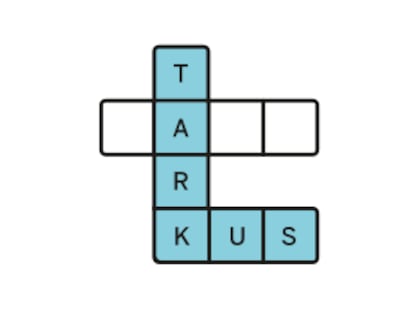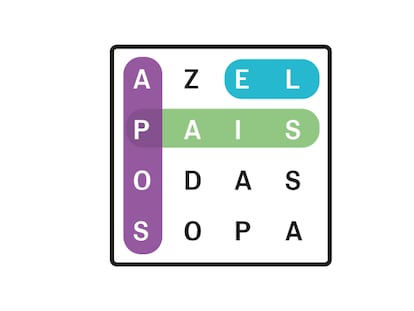The truth behind ‘self-deporting’ through the CBP Home app
The Trump administration has promoted the idea that voluntarily leaving the United States using the application would bring benefits, but the reality is that it is no different from other forms of deportation


In front of the cameras in the Oval Office, President Donald Trump said it himself. “My administration is launching the CBP Home app to give people in our country illegally an easy way to leave now and self-deport voluntarily. If they do, they could potentially have the opportunity to return legally at some point in the future. “If they do not avail themselves of this opportunity, then they will be found, they will be deported and they will never be admitted again to the United States — ever, ever again, you’re never coming in,” he announced in a video posted on the White House YouTube channel a little over two weeks ago.
Anyone listening to these words would assume that using the app — which was converted from Biden’s CBP One, which served to expedite asylum requests, to one that allowed users to provide their personal information to immigration authorities and voluntarily leave the country — will bring legal or immigration benefits. After almost a month in operation, the supposed benefits that have been used to promote the app’s use look increasingly deceptive.
While the Trump administration boasts of record numbers of self-deportations, without providing verifiable official figures, migrants and immigration lawyers warn that using CBP Home to voluntarily self-deport is not different from a regular legal expulsion. The difference is that there is no hearing before a judge and, therefore, no signed voluntary departure order. But re-entry restrictions apply equally: if the person has been in the United States illegally for less than 180 days, they are barred for three years; if they have been in the country without papers for more than a year, the ban is 10 years. Furthermore, even after waiting for these periods to expire, the chances of being granted a visa, whether tourist or work, with a deportation record, even if voluntary, are extremely low.
“Initially, it sounded to immigrants like they were being told: ‘We know you’ve been here illegally, but if you leave using this app, then maybe you’ll be able to come back eventually and live the American dream. If you don’t use it, you’ll never be able to come back.’ But the CBP Home app doesn’t help you with that. So it’s like a trap,” says immigration attorney Jonathan Shaw, who has worked on these issues in Utah for 15 years, although he has clients in every state in the country.
In fact, for those familiar with the intricacies of the immigration system like Shaw, the CBP Home app is a mystery because it offers nothing new. “In a voluntary departure process, you ask an immigration judge to issue you a voluntary departure order instead of a deportation order. You’ll still have the three- or 10-year restriction, but you won’t have a deportation order on your record. So that’s a bit of a benefit in that case. Also, with the app, the person who registers provides their information and basically promises the government they’re going to leave. But if they end up staying, then they could use that against them,” Shaw explains.
Others are even more pessimistic about the supposed benefits for undocumented immigrants who self-deport using CBP Home, although they don’t believe the authorities have lied, but rather intentionally misled them. Like attorney Wilfredo Allen, who has been practicing in Miami for 40 years, half of that time exclusively in the immigration field. “It’s true and it’s a lie. It’s true because, after serving the time bar, you can return to your country and apply for a visa. But what visa are they going to give you? A tourist visa after a deportation or a history of irregular stay? The probability is zero. A work visa? You have to prove that there’s no one else who can do that job, but you’re automatically at the bottom of the list,” Allen explains.
“They’re not really giving you any concrete options,” he continues, before presenting a hypothetical situation. “Let’s say you’re a fieldworker and you leave. If they told you that if you legally apply for a temporary work visa, you’d be put first in line, that would be a real benefit. That would be fantastic, but they’re not doing that.”
The only relatively feasible way to return to the United States after deportation, even if it’s self-deportation, is to receive a government pardon. Lawyers explain that a family member — usually a spouse, parent, or child of the deported person who resides in the country — can request that the deportee be pardoned and allowed to return, justifying that the person is physically dependent on the person who has been removed from the country. However, they add, the likelihood of a pardon being accepted is very low, and probably even lower now.
The Trump administration began its crusade against undocumented immigrants from day one, and one of the first things it did was disable the old CBP One app, leaving thousands of people without an asylum appointment and in limbo. As the first weeks have given way to the first months of Trump’s second presidency, the emphasis on the idea of “self-deportation” has increased in parallel with growing evidence that carrying out the “largest deportation in history” is an extremely difficult task. As evidence, while crossings of the southern border by new undocumented migrants have almost completely stopped, deportations are at a rate very similar to, or slightly lower than, during Joe Biden’s term.
Sign up for our weekly newsletter to get more English-language news coverage from EL PAÍS USA Edition
Tu suscripción se está usando en otro dispositivo
¿Quieres añadir otro usuario a tu suscripción?
Si continúas leyendo en este dispositivo, no se podrá leer en el otro.
FlechaTu suscripción se está usando en otro dispositivo y solo puedes acceder a EL PAÍS desde un dispositivo a la vez.
Si quieres compartir tu cuenta, cambia tu suscripción a la modalidad Premium, así podrás añadir otro usuario. Cada uno accederá con su propia cuenta de email, lo que os permitirá personalizar vuestra experiencia en EL PAÍS.
¿Tienes una suscripción de empresa? Accede aquí para contratar más cuentas.
En el caso de no saber quién está usando tu cuenta, te recomendamos cambiar tu contraseña aquí.
Si decides continuar compartiendo tu cuenta, este mensaje se mostrará en tu dispositivo y en el de la otra persona que está usando tu cuenta de forma indefinida, afectando a tu experiencia de lectura. Puedes consultar aquí los términos y condiciones de la suscripción digital.
More information
Archived In
Últimas noticias
Chris Martin, Taylor Swift, Elijah Wood and other famous wedding ‘crashers’
‘How does it feel to be a failure?’: Elizabeth Berkley’s journey from ‘Showgirls’ ridicule to vindication
The story of the Málaga virus: The code that haunted Google’s cybersecurity center director for 30 years
The impact of Ecuador’s mega-prison: A polluted river, cleared forests and military checkpoints
Most viewed
- Christian Louboutin: ‘Young people don’t want to be like their parents. And if their parents wear sneakers, they’re going to look for something else’
- The low-cost creative revolution: How technology is making art accessible to everyone
- Liset Menéndez de la Prida, neuroscientist: ‘It’s not normal to constantly seek pleasure; it’s important to be bored, to be calm’
- All the effects of gentrification in one corner of Mexico’s Colonia Roma
- December Social Security and SSI payments: Dates, double checks and the 2026 COLA increase










































